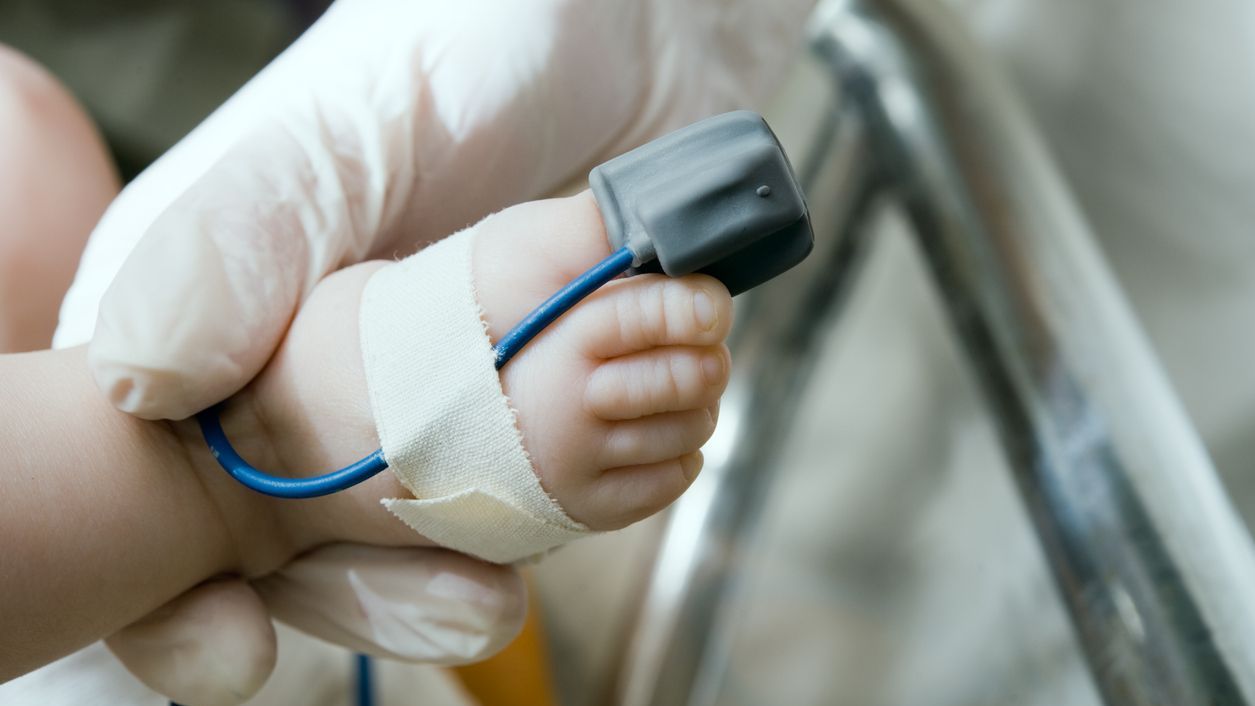Key points
- Heart defects are the most common type of birth defect, affecting nearly 1% of births each year.
- As medical care and treatment have advanced, people with heart defects are living longer and healthier lives.
- Many people with heart defects are not cured, even if their heart defect has been surgically repaired.
- Routine checkups with a heart doctor can help people with heart defects stay as healthy as possible.

What it is
Congenital heart defects affect how blood flows through the heart and out to the rest of the body. Congenital means they are present at birth. Heart defects can vary from mild (a small hole in the heart) to severe (missing parts of the heart).
In the United States, heart defects affect nearly 1% of births, or about 40,000 babies, each year.12 About 1 in 4 babies born with a heart defect has a critical heart defect.3 Babies with critical heart defects need surgery or other procedures in the first year of life.
Types
Listed below are examples of different types of heart defects. The types marked with a star (*) are considered critical.
- Atrial Septal Defect
- Atrioventricular Septal Defect
- Coarctation of the Aorta*
- Double-outlet Right Ventricle*
- d-Transposition of the Great Arteries*
- Ebstein Anomaly*
- Hypoplastic Left Heart Syndrome*
- Interrupted Aortic Arch*
- Pulmonary Atresia*
- Single Ventricle*
- Tetralogy of Fallot*
- Total Anomalous Pulmonary Venous Return*
- Tricuspid Atresia*
- Truncus Arteriosus*
- Ventricular Septal Defect
Signs and symptoms
Signs and symptoms for heart defects depend on the type and severity of the particular defect. Some defects might have few or no signs or symptoms. Others might cause a baby to have the following symptoms:
- Blue-tinted nails or lips
- Fast or troubled breathing
- Tiredness when feeding
- Sleepiness
Risk factors
The causes of heart defects among most babies are unknown. Some babies have heart defects because of changes in their individual genes or chromosomes. A combination of genes, behaviors, and our environment may increase the risk for developing a heart defect. But we don't fully understand how these factors might work together to cause heart defects.
While we have more work to do, we have learned about factors that might increase the risk for heart defects. For example, the following has been linked to heart defects in babies:45
- Certain conditions a mother has, like pre-existing diabetes or obesity
- Smoking during pregnancy
- Certain medications taken during pregnancy
Screening and diagnosis
Some heart defects can be found during pregnancy using a special type of ultrasound called a fetal echocardiogram. Other heart defects aren't detected until birth or later in life, during childhood or adulthood. If a healthcare provider suspects a defect, the baby can get several tests (such as an echocardiogram) to confirm the diagnosis.

After birth, newborn screening for critical heart defects can help identify babies whose heart defects were not detected during pregnancy. Newborn screening for critical heart defects involves a simple bedside test called pulse oximetry. This test estimates the amount of oxygen in a baby’s blood. Low levels of oxygen in the blood can be a sign of a critical heart defect. Screening newborns for heart defects enables them to be treated early and may prevent other health problems or early death.
Treatment and recovery
Treatment for heart defects depends on the type and severity of the defect present. Some affected infants and children might need one or more surgeries to repair the heart or blood vessels. Some can be treated without surgery using a procedure called cardiac catheterization. A long tube, called a catheter, is threaded through the blood vessels into the heart. This procedure helps a doctor take measurements and pictures, do tests, or repair the problem.
Sometimes the heart defect can't be fully repaired, but these procedures can improve blood flow and the way the heart works. For some people, even if their heart defect has been repaired, they are not cured and will require follow-up care.
Living with heart defects
As medical care and treatment have advanced, people with heart defects are living longer and healthier lives. Scientists estimate that more than 2 million people in the United States are living with a heart defect.6
Even with improved treatments, many people with heart defects are not cured, even if their heart defect has been surgically repaired. People with heart defects can develop other health problems over time. People with a heart defect need routine checkups with a cardiologist (heart doctor) to stay as healthy as possible.
- Hoffman JL, Kaplan S. The incidence of congenital heart disease. J Am Coll Cardiol. 2002;39(12):1890-1900.
- Reller MD, Strickland MJ, Riehle-Colarusso T, Mahle WT, Correa A. Prevalence of congenital heart defects in Atlanta, 1998-2005. J Pediatr. 2008;153(6):807-13.
- Oster M, Lee K, Honein M, Colarusso T, Shin M, Correa A. Temporal trends in survival for infants with critical congenital heart defects. Pediatrics. 2013;131(5):e1502-8.
- Jenkins KJ, Correa A, Feinstein JA, Botto L, Britt AE, Daniels SR, Elixson M, Warnes CA, Webb CL. Noninherited risk factors and congenital cardiovascular defects: current knowledge: a scientific statement from the American Heart Association Council on Cardiovascular Disease in the Young: endorsed by the American Academy of Pediatrics. Circulation. 2007;115(23):2995-3014.
- Patel SS, Burns TL. Nongenetic risk factors and congenital heart defects. Pediatr Cardiol. 2013;34(7):1535-55.
- Gilboa SM, Devine OJ, Kucik JE, Oster ME, Riehle-Colarusso T, Nembhard WN, Xu P, Correa A, Jenkins K, Marelli AJ. Congenital heart defects in the United States: estimating the magnitude of the affected population in 2010. Circulation. 2016;134(2):101-9.

